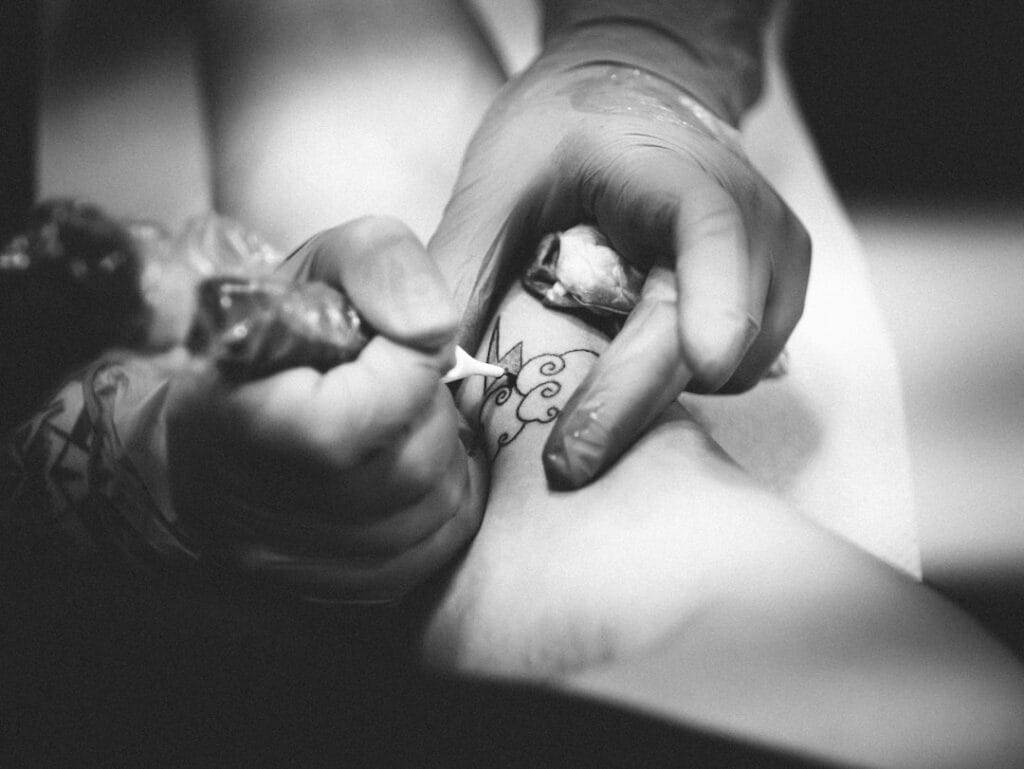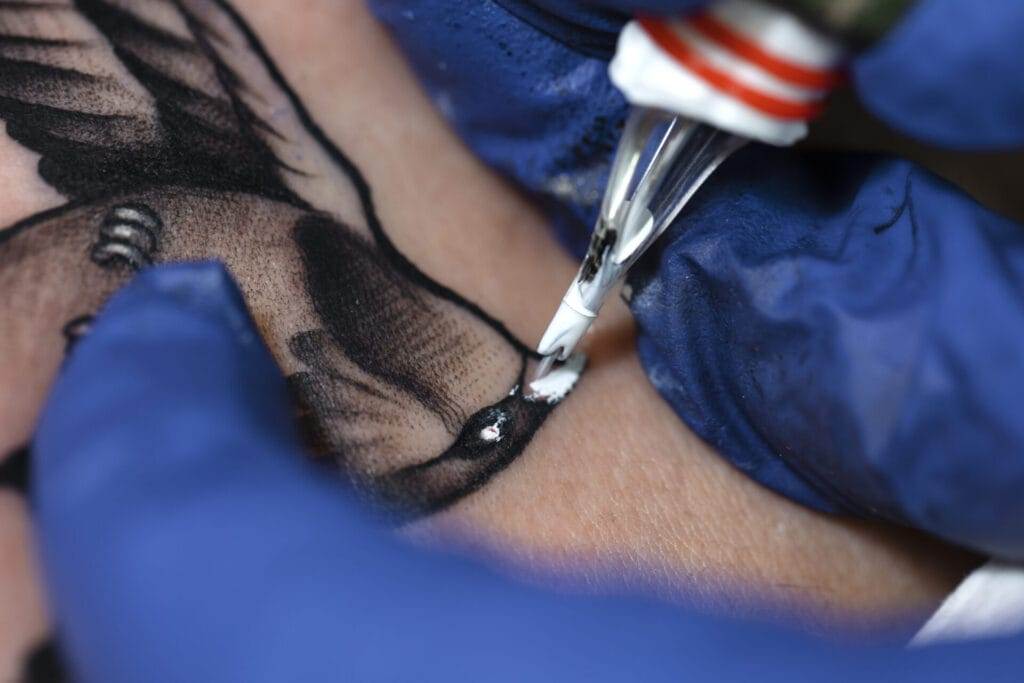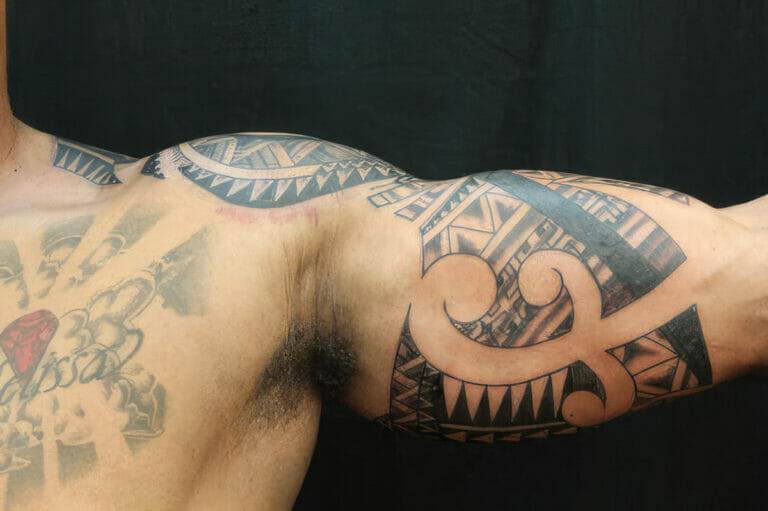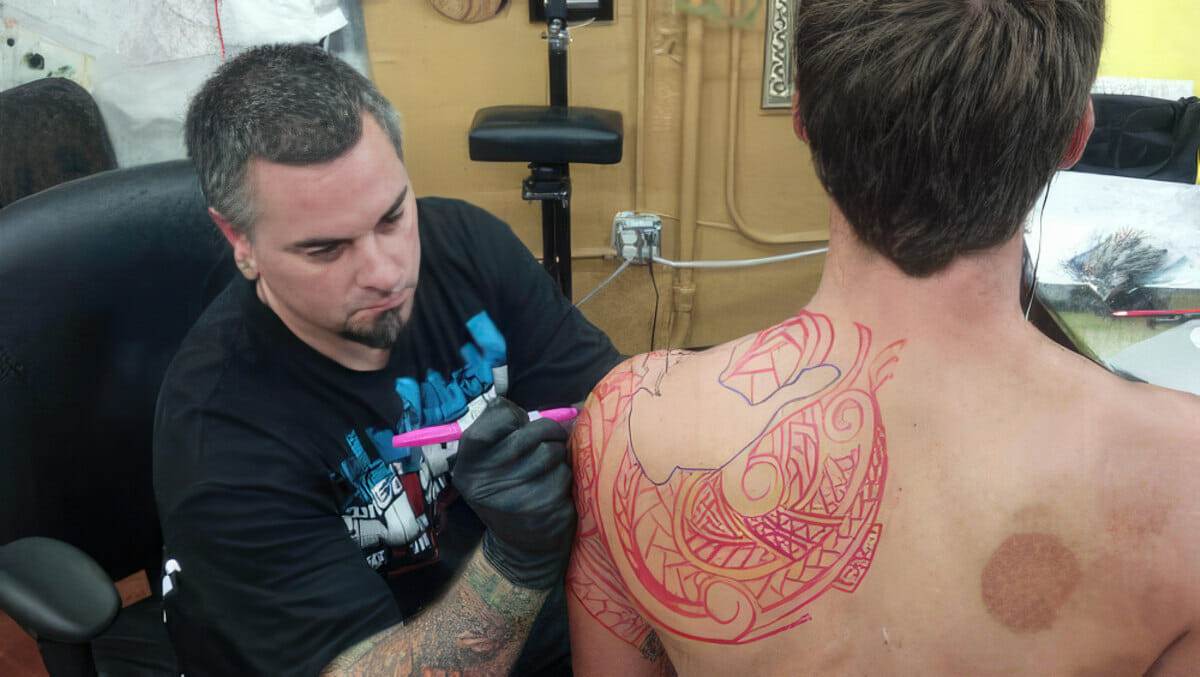
Tattoos have become a popular form of self-expression in recent years. They can hold significant meaning for individuals, representing their beliefs, experiences, or personal style. However, it is important to understand that tattoos require proper maintenance to preserve their quality and longevity. Without proper care, tattoos can fade, blur, or become distorted over time. In this article, we will explore the anatomy of a tattoo, common causes of tattoo fading, and provide tips for protecting and maintaining your ink.
Understanding the anatomy of a tattoo
To understand how to maintain a tattoo, it is important to first understand its anatomy. Tattoos are made up of ink particles that are injected into the dermis layer of the skin. The dermis is the second layer of skin, located beneath the epidermis. Unlike the epidermis, which sheds and regenerates constantly, the dermis is more stable and does not shed as frequently.
When a tattoo artist injects ink into the dermis layer, the body recognizes it as a foreign substance and tries to remove it. However, the ink particles are too large for the body’s immune system to remove completely. As a result, the ink particles remain in the dermis permanently, creating a permanent design.
Common causes of tattoo fading
While tattoos are designed to be permanent, they can still fade over time due to various factors. Some common causes of tattoo fading include exposure to sunlight and UV rays, aging and natural skin regeneration, and poor aftercare and maintenance.
Exposure to sunlight and UV rays is one of the main culprits behind tattoo fading. The UV rays can break down the ink particles in the skin, causing them to fade or blur. It is important to protect your tattoos from excessive sun exposure by applying sunscreen with a high SPF to tattooed areas and wearing protective clothing or seeking shade when spending time outdoors.
Aging and natural skin regeneration can also contribute to tattoo fading. As we age, our skin becomes thinner and loses elasticity, which can cause tattoos to appear less vibrant. Additionally, the constant shedding and regeneration of the epidermis layer can gradually push the ink particles closer to the surface of the skin, resulting in a faded appearance.
Poor aftercare and maintenance can also lead to tattoo fading. It is crucial to follow the aftercare instructions provided by your tattoo artist to ensure proper healing and preservation of your tattoo. Failure to clean and moisturize your tattoo properly can result in dryness, cracking, and ultimately, fading.
Tips for protecting tattoos from the sun
To protect your tattoos from the damaging effects of the sun, it is important to take certain precautions. One of the most effective ways to protect your tattoos from sun exposure is by applying sunscreen with a high SPF to tattooed areas. Look for a broad-spectrum sunscreen that offers protection against both UVA and UVB rays. Apply sunscreen generously and reapply every two hours or after swimming or sweating.
In addition to sunscreen, wearing protective clothing can also help shield your tattoos from the sun. Opt for lightweight, breathable fabrics that cover your tattoos when spending time outdoors. Wide-brimmed hats and long-sleeved shirts are great options for protecting tattoos on the face, neck, and arms.
If possible, seek shade during peak sun hours, typically between 10 am and 4 pm. This will help reduce your overall sun exposure and minimize the risk of tattoo fading.
The role of moisturizers in tattoo maintenance
Moisturizers play a crucial role in maintaining the quality and appearance of tattoos. They help to keep the skin hydrated, preventing dryness and cracking that can lead to fading or distortion of the tattoo.
When choosing a moisturizer for your tattoo, opt for a fragrance-free, gentle formula. Fragrances and harsh ingredients can irritate the skin and potentially damage the tattoo. Look for a moisturizer that is specifically formulated for sensitive skin or tattoos.
Apply the moisturizer to your tattooed area regularly, especially after showering or washing your tattoo. Gently massage the moisturizer into the skin, ensuring that it is fully absorbed. This will help keep your tattoo looking vibrant and prevent dryness or flaking.
How to properly clean and care for new tattoos
Proper aftercare is essential for the healing and preservation of new tattoos. When you first get a tattoo, your tattoo artist will provide you with specific aftercare instructions. It is important to follow these instructions carefully to ensure proper healing and minimize the risk of infection or complications.
In general, here are some tips for cleaning and caring for new tattoos:
– Keep the bandage on for at least a few hours or as instructed by your tattoo artist.
– Gently remove the bandage and wash your tattoo with lukewarm water and a mild, fragrance-free soap.
– Pat your tattoo dry with a clean towel or let it air dry.
– Apply a thin layer of fragrance-free, gentle moisturizer to your tattooed area.
– Avoid soaking your tattoo in water, such as swimming pools, hot tubs, or baths, until it is fully healed.
– Avoid exposing your tattoo to excessive moisture, such as heavy sweating or prolonged exposure to water.
By following these aftercare instructions and taking proper care of your new tattoo, you can ensure optimal healing and long-term preservation of your ink.
The benefits of touch-ups and when to schedule them

Even with proper maintenance, tattoos can still fade over time. This is where touch-ups come in. Touch-ups involve going back to your tattoo artist to have certain areas of your tattoo re-inked or refreshed.
Touch-ups can help restore the vibrancy and clarity of a tattoo, making it look as good as new. They can also fix any areas that may have faded or blurred over time.
The frequency of touch-ups will vary depending on various factors, such as the quality of the original tattoo, the location of the tattoo, and your individual skin type. In general, touch-ups are typically scheduled every few years to maintain the quality and appearance of the tattoo.
It is important to consult with your tattoo artist to determine when a touch-up is necessary. They will be able to assess the condition of your tattoo and provide recommendations based on their expertise.
The impact of lifestyle choices on tattoo longevity
Your lifestyle choices can have a significant impact on the longevity and quality of your tattoos. Certain habits and behaviors can contribute to the fading and deterioration of tattoos.
Smoking is one habit that can negatively affect tattoos. The chemicals in cigarettes can damage the skin and hinder the healing process, leading to poor tattoo quality and increased fading. Additionally, smoking can constrict blood vessels, reducing blood flow to the skin and potentially affecting the vibrancy of tattoos.
Excessive drinking can also have a detrimental effect on tattoos. Alcohol dehydrates the body, which can lead to dryness and cracking of the skin. This can cause tattoos to fade or become distorted over time.
Poor diet can also contribute to tattoo fading. A diet lacking in essential nutrients can weaken the skin’s overall health and resilience, making it more susceptible to damage and fading. It is important to maintain a balanced diet rich in vitamins, minerals, and antioxidants to support healthy skin and preserve the quality of your tattoos.
Maintaining a healthy lifestyle overall is crucial for preserving the longevity of your tattoos. This includes staying hydrated, eating a nutritious diet, getting regular exercise, and managing stress levels.
How to avoid damaging tattoos during exercise and physical activity
Exercise and physical activity are important for overall health and well-being. However, it is important to take precautions to avoid damaging your tattoos during these activities.
One of the main concerns during exercise is excessive rubbing or friction on the tattooed area. This can cause irritation, redness, and potentially lead to fading or distortion of the tattoo. To avoid this, wear breathable, loose-fitting clothing that does not rub against your tattoo. Opt for fabrics that are gentle on the skin, such as cotton or moisture-wicking materials.
Avoid exposing your tattoos to excessive sweat or moisture during exercise. Sweat can cause the ink to run or blur, resulting in a faded appearance. If you anticipate heavy sweating during your workout, consider covering your tattoo with a breathable bandage or wrap to protect it.
After exercising, make sure to clean and moisturize your tattoo as part of your regular aftercare routine. This will help remove any sweat or dirt that may have accumulated on the tattooed area and keep it hydrated.
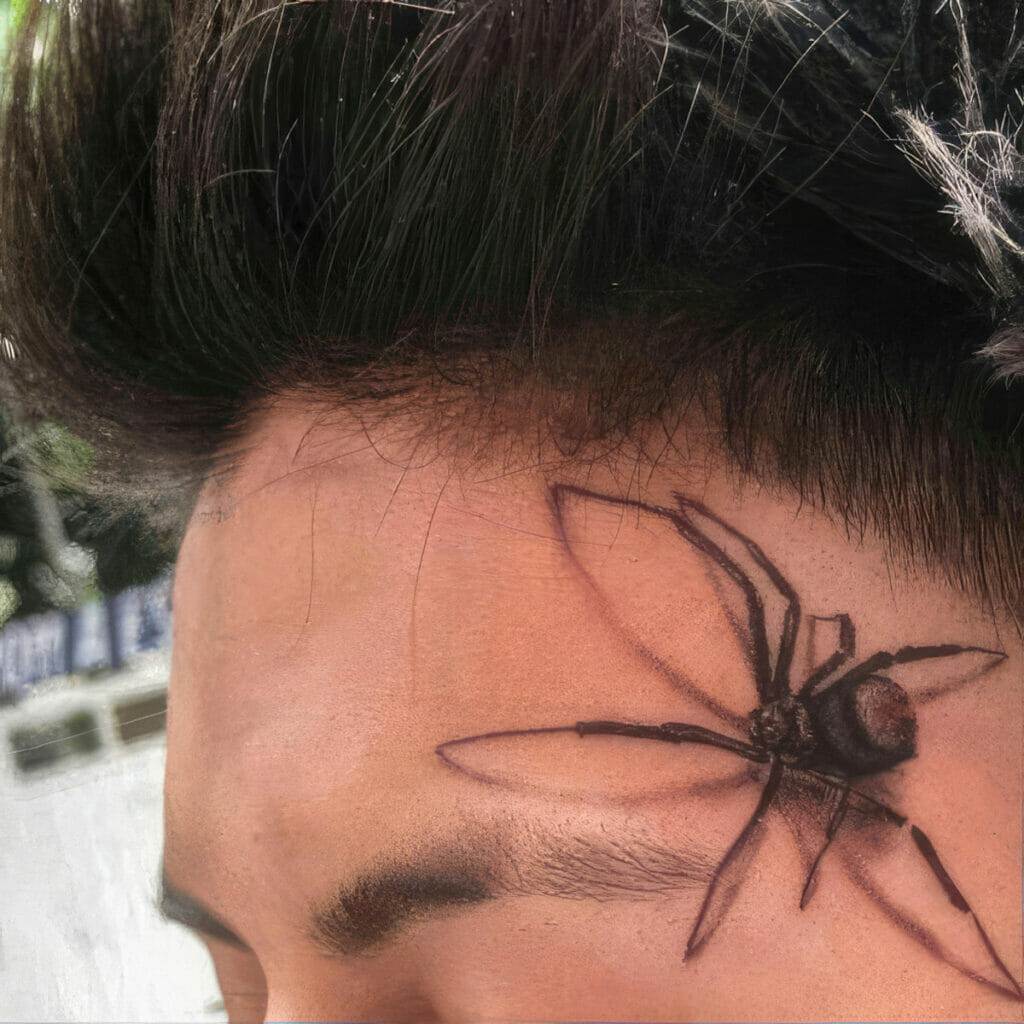
The art of tattoo maintenance is essential for keeping your ink looking fabulous for years to come.
Proper maintenance and aftercare are crucial for preserving the quality and longevity of tattoos. By understanding the anatomy of a tattoo, protecting it from the sun, using moisturizers, and following proper cleaning and care routines, individuals can enjoy their tattoos for a lifetime.
Additionally, making healthy lifestyle choices, scheduling touch-ups as needed, and choosing a reputable tattoo artist are all important factors in maintaining the vibrancy and clarity of tattoos.
Remember, tattoos are a form of self-expression and can hold significant meaning for individuals. By taking the time to properly maintain and care for your tattoos, you can ensure that they continue to look fabulous for years to come.


